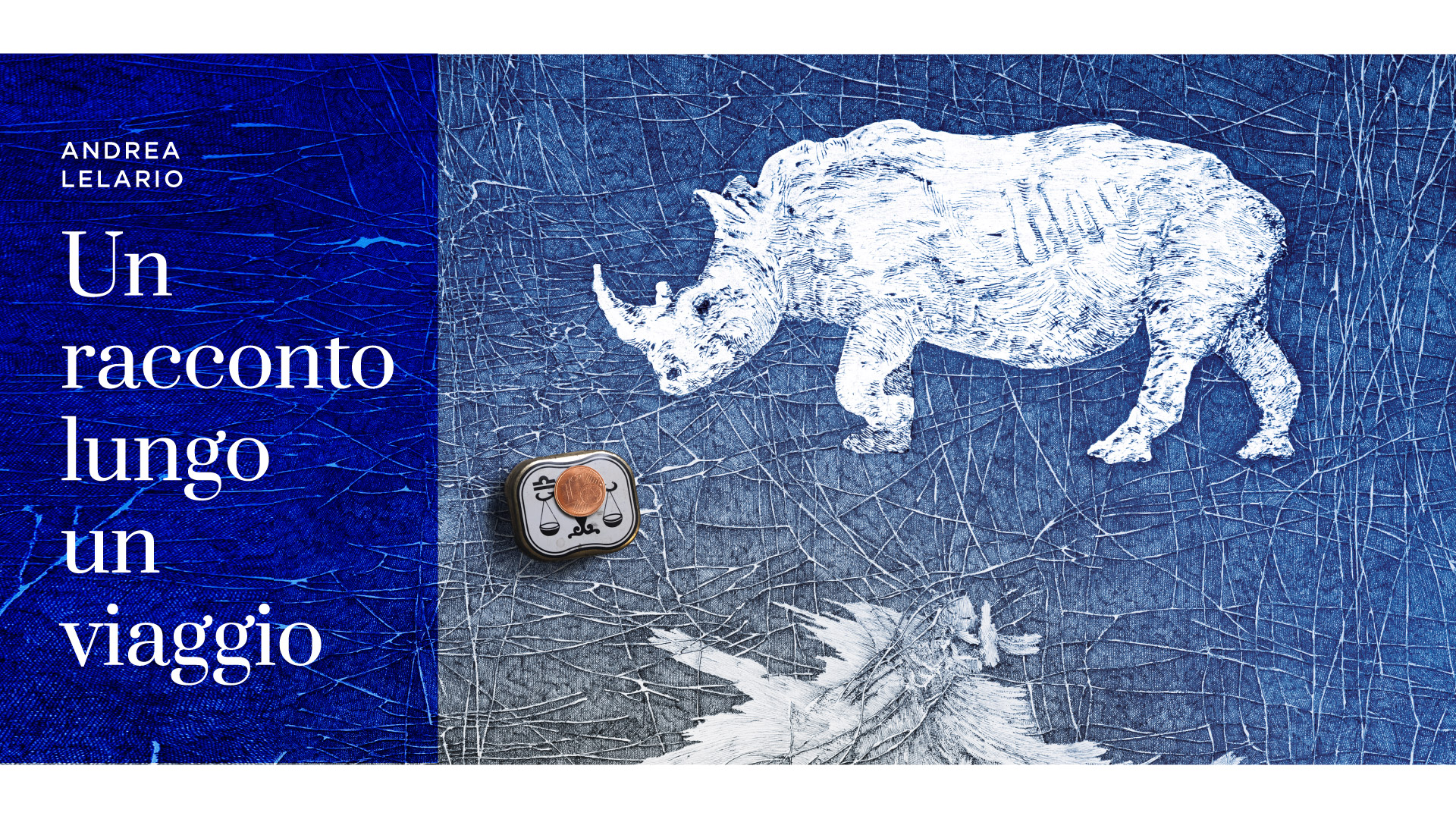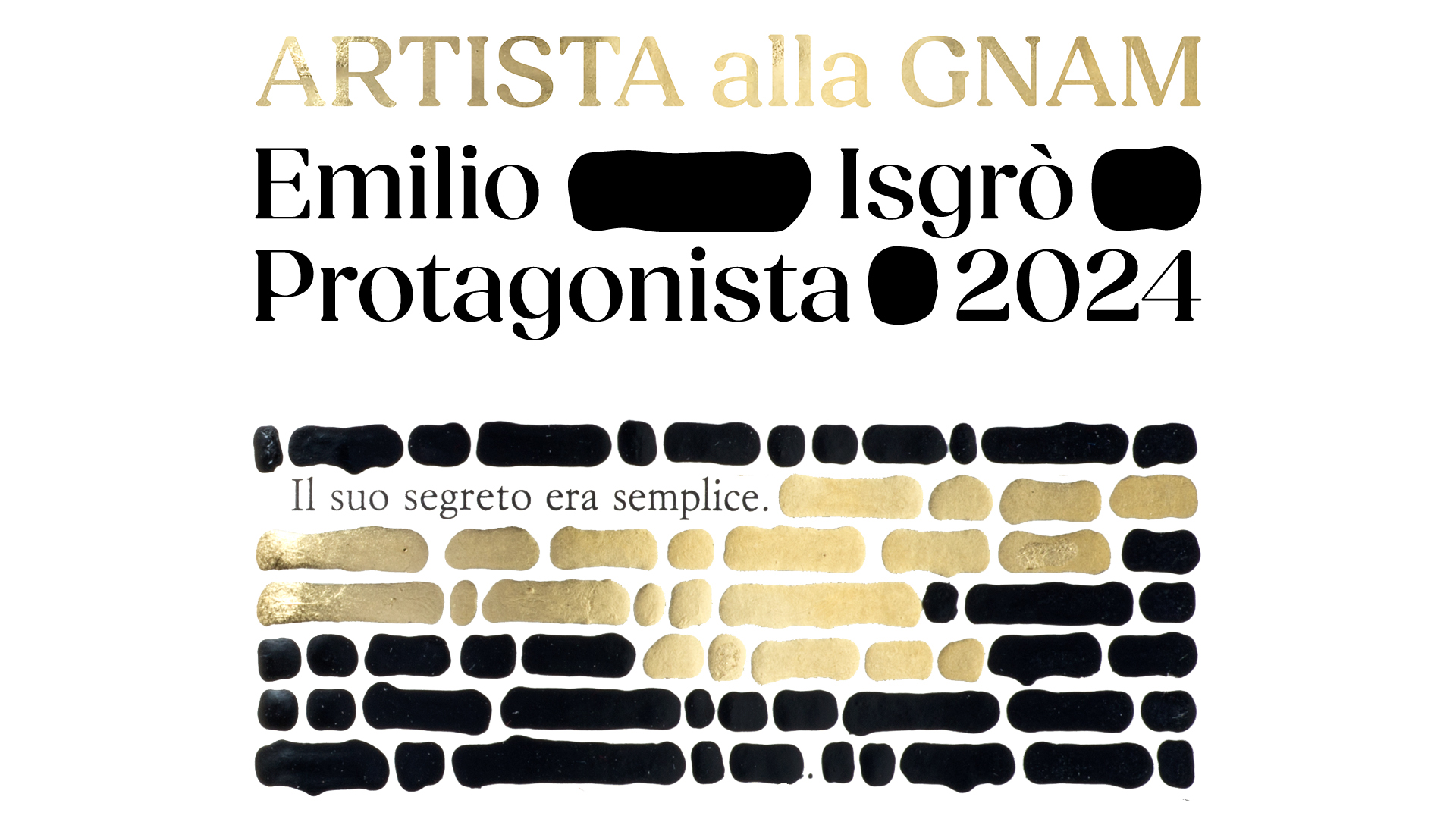Room 0 – Introduction
Monica Bolzoni – independent fashion designer – this definition encapsulates the innovative and distinctive character of her work, particularly when placed in the historical context in which she worked, from the 1980s up to the early years of the 21st century, when Italian fashion established itself on the international stage but the separation between fashion and design was still very clear cut. Unlike design focused on fashion house collections and the catwalk as a showcase of the major labels, Monica Bolzoni sought to buck the trend proposing a modular fashion, evergreen garments designed on and for a real feminine body as opposed to the idealised one, more common to the fashion industry. She chose “the street”, opening a space imbued with the worlds of fashion, art, cinema and avant-garde theatre acting as a direct meeting point with her clients.
Monica Bolzoni’s landmark brand Bianca e Blu was born in a pre-existing space in via de Amicis in Milan. The name conformed perfectly with her idea of duality as an expression of a woman freed from convention, “Bianca e Blu was already there, it is feminine and masculine: it’s ambiguous.”
BB1 was followed by BB2, more spacious premises than the first but remaining on the same street. They were both conceived as a magical transformative setting where a wide array of apparel and accessories allowed women to explore and interpret in a playful manner archetype of the feminine, thus revealing their own femininity or indeed multiple femininities. The final incarnation, BB Land, relocated to Milan’s Naviglio Grande becoming an archive of memories that collected clothing, accessories as well as hard copy and digital documents.
“I feel the need to personalise and reclaim the notion of the feminine: free, colourful, simple, easily wearable and with real proportions, in contrast to current fashion.”
– Monica Bolzoni
Room 1 – Literary inspirations
Game of common memories
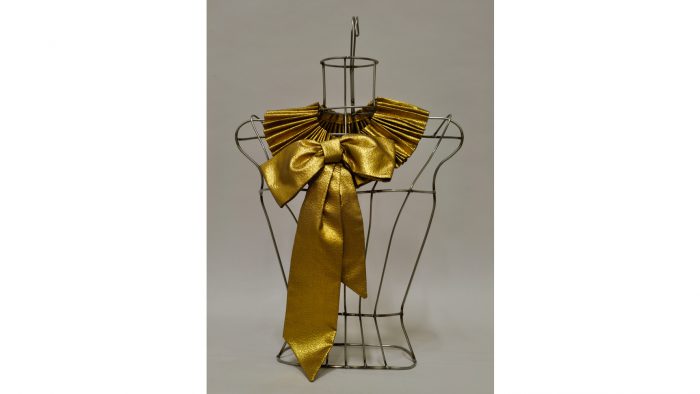
Collare plissé in lamé dorato
© Marcello Formichi, Polo museale della Toscana / Pinacoteca di Siena
Literary inspirations, especially the influence of characters from Mademoiselle de Maupin to Alice in Wonderland and Pinocchio, have become an integral part of the grammar and syntax of the designer. They are the starting point of the “dress of thoughts”, an ideal summary of her poetry and vision.
“If you wonder how we can describe womanhood or femininity, it is certainly possible to do so characterising the woman or women on the empirical plane (in terms of “size”), but in the end you realise that all that we can say, or have ever said, about women remains unsatisfactory and incomplete because we have merely outlined individual femininities that often contradict each other and do not embrace womanhood as a whole. There must be another way to approach the “feminine” and you have to address the “female form”, this malleable vessel of empirical particularism. We must return to the archetypal form and its normative representative myths of the feminine created by characters, poetry, songs, stories and all of the works of art.”
– Caterina Marrone
Room 2 – The space and atmosphere of Bianca e Blu
Dressing up is having fun
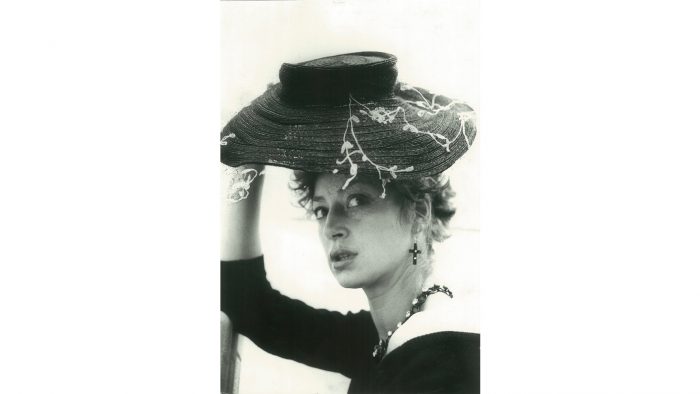
Ritratto di Monica Bolzoni in abiti Bianca e Blu
© Maria Mulas
“Sherazade, Grace, Albertine, Brigitte, Fedra, Justine and Cenerentola – some of the most representative items of clothing from Bolzoni’s production – they ignite via their functional identity a kind of archetypal sisterhood that inspires and leads the clients in a playful, exciting and visionary assembly of a personal look”
– Vittoria Caterina Caratozzolo
Room 4 – The method and the grammar
Colors as values
Dresses that inhabit the wardrobe
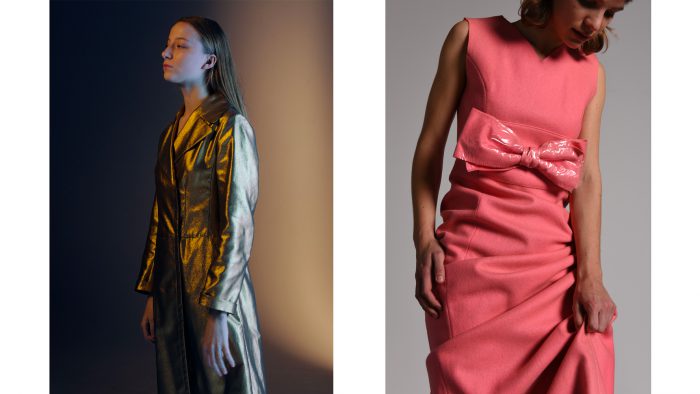
Spolverino doppiopetto in lamé dorato di Bianca e Blu
© ECAL / Marvin Leuvrey
Kronos, abito lunghissimo in pannolenci rosa con fiocco in pannolenci ricoperto di PVC
© ECAL / Senta Simond e/and Laura Zoccarato
The methodological approach of Monica Bolzoni starts with geometry and its main forms in relation to the body to develop the concept of modularity. When linked together with the wide study of colours and materials, it results in the production of cherished outfits and evergreen garments that are functional and combine perfectly.
“Clothing design implies the application of basic geometric forms (the triangle, rectangle, square and circle) and I always start with the relationship between the body and geometry. These geometric forms are the alphabet of a language that is in a constant state of flux. Designing a garment through the prism of the geometry of the body entails adapting its geometric forms with the rectangle par excellence: the human body. I think beauty is S, M, L, XL – the body in sequence”
– Monica Bolzoni
“Design for clothing also involves facing the issue of wearability: what the study of shape and form finds is that it is not a question of thinking about the clothes on the body, but of the body in the clothes.”
– Annalisa Trentin
Room 5 –Uniform and basic fashion
Cherished pieces
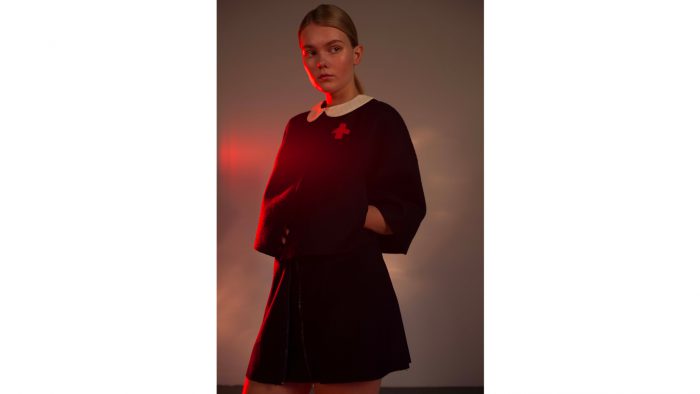
Mantellina in panno di lana blu navy con croce in PVC rosso; colletto piatto in nylon; Eros, abito in jersey di lana blu navy di Monica Bolzoni
© ECAL / Yuliya Khan e/and Maria Tasula
“By its very nature a myth transitions, the feminine may extend towards the masculine”
– Caterina Marrone
Manifesto
Fashion Design
The subject matter of design is the human body.
Design concerns itself with how a dress is a long-lasting answer for the need to feel at ease with oneself. The mood (feeling/perceiving the moment) is functional for an evolving design that reworks its elements delivering a new, contemporary product, which does not age, due to it being a design (containing new and timeless elements).
It suits all kinds of body (S, M, L, XL); the “model” is the real body.
It offers a complete wardrobe, thus showing women the freedom of choice in how they dress.
It allows them to interpret in a free way the complexities of feminine expressions; any woman can simultaneously be all women (with dresses that have names that evoke atmospheres, places and characters).
The change entails a particular hypothesis of modularity insofar as the individual parts (components) of the collections can be added to or subtracted from each other, within the framework of an undefined mixing and matching of collectible pieces over time.
It is founded on the value of ideas.
On the luxury of independence of expression.
On colour being of value.
Fashion
The subject matter is the very change that creates the market.
The aim is the offer of clothing linked to a brief moment in time, in constant search of continuous change.
The model’s is the idealized body.
Fashion imposes a singular approach each and every time, exhibiting the kind of woman favoured on the catwalk and in advertising campaigns by all designers.
Change corresponds to the seasonal need for collections that must be “different” from the previous ones.
It is founded on the value of the brand.
On luxury being of value.
Room 6 – Collaboration with the artist Letizia Cariello
“In a harmonious system of balance between aesthetic pursuit and functionality, between geometric forms and the proportions of the body, the clothing of Bianca e Blu is arrayed in various colours, textiles and fabrics, set out in a range of mix and match combinations. Just like the costumes produced for works of art, they represent the perfect example”
– Vittoria Caterina Caratozzolo
Room 7 – Collaboration with the artist Vanessa Beecroft
Room 9 Photo gallery
“The meeting of body and clothing, outward and inward appearance operating in perfect harmony”
– Mariuccia Casadio

